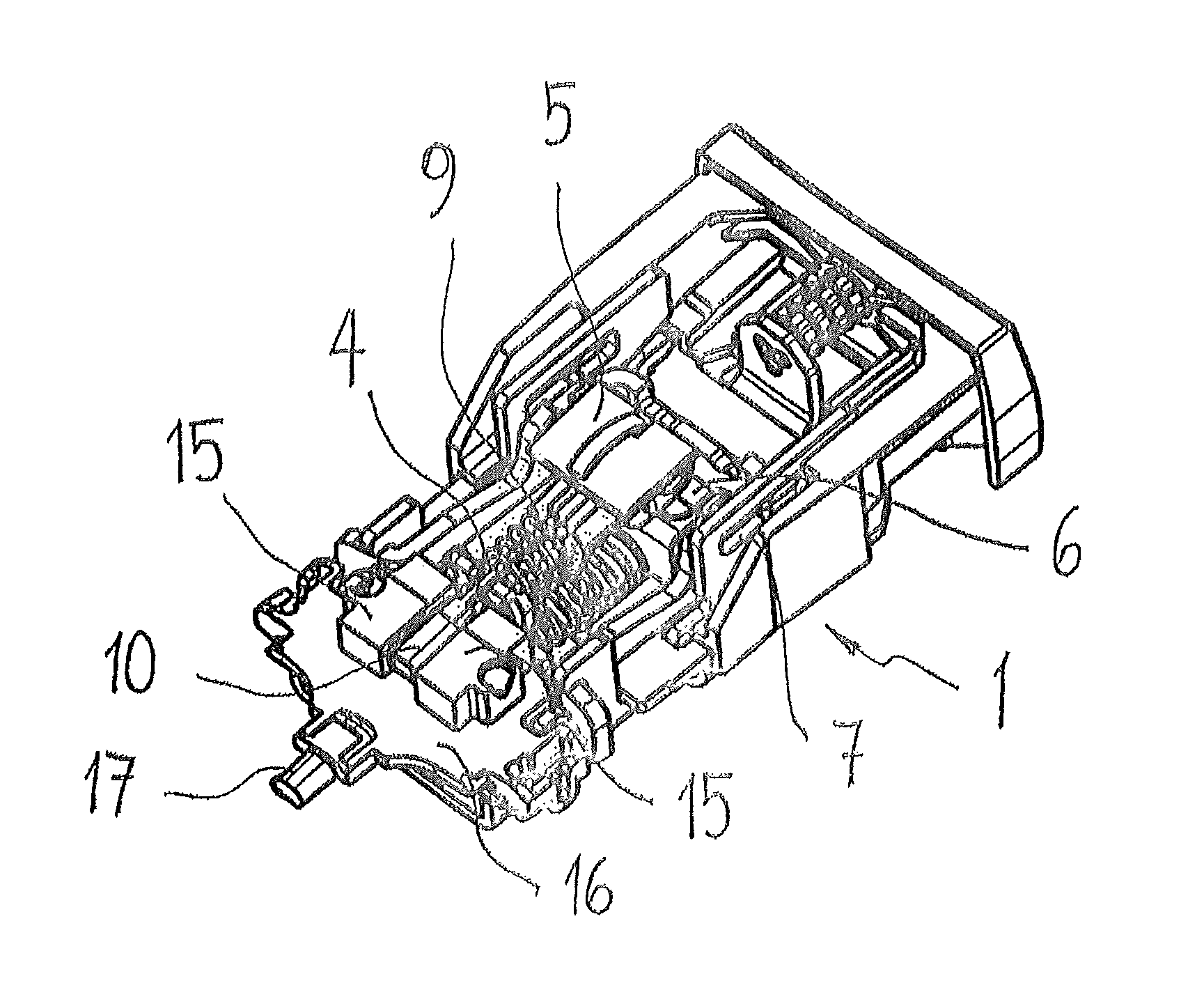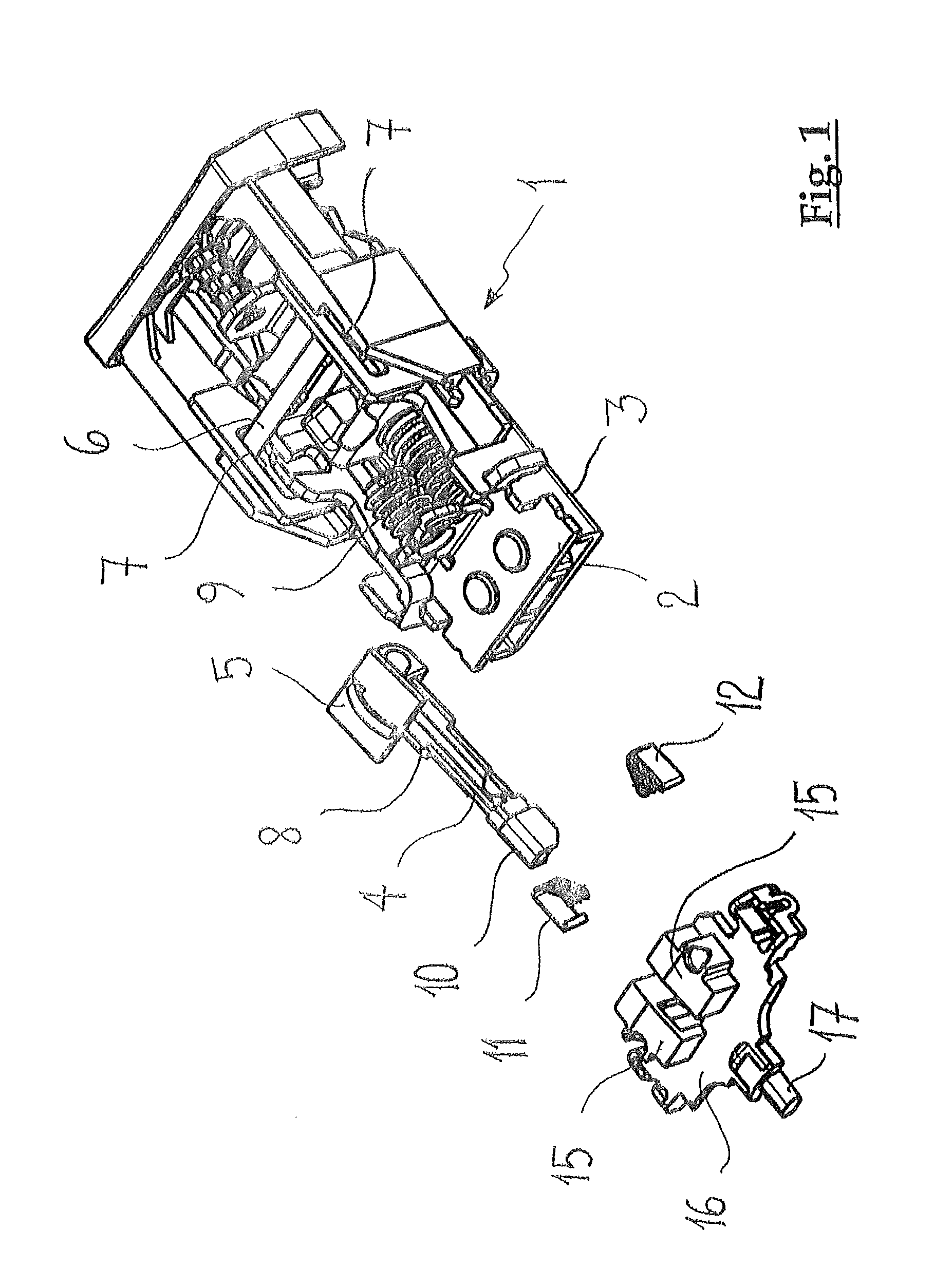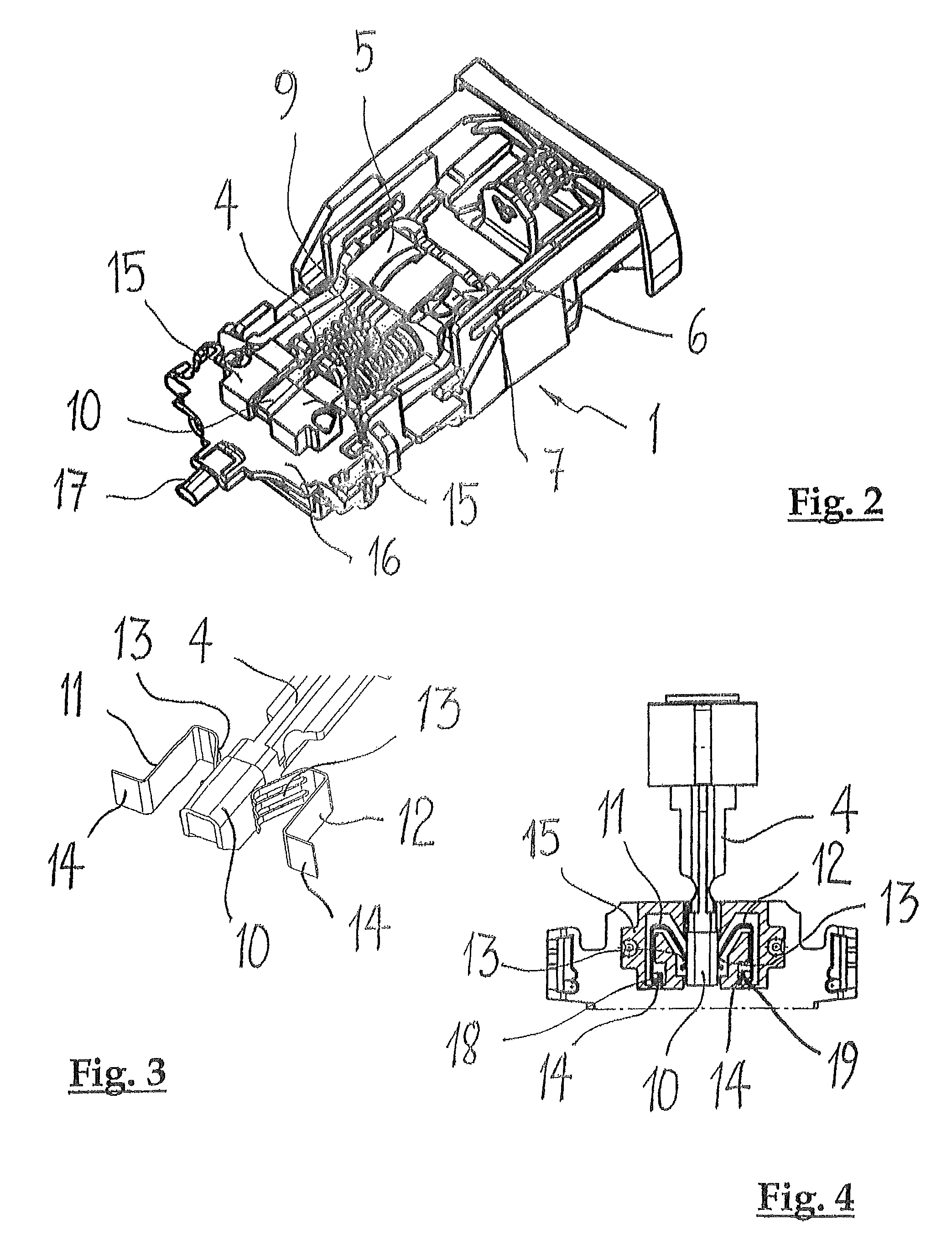Belt lock with status detector
a technology of status detector and belt lock, which is applied in the field of belt locks, can solve the problems of complex and expensive subsequent installation of hall sensors, complicated structure or installation, and high cost of hall sensors, and achieve the effect of simplifying mounting and simplifying installation
- Summary
- Abstract
- Description
- Claims
- Application Information
AI Technical Summary
Benefits of technology
Problems solved by technology
Method used
Image
Examples
Embodiment Construction
[0023]The belt lock shown in FIG. 1 in a partially exploded perspective view and in FIG. 2 in the assembled state corresponds largely to the belt lock shown in EP-1 025 774 B1 using FIGS. 1-6, the entire contents of which are hereby incorporated by reference. The following description of the disclosure is therefore limited to the components of the belt lock that are important to the understanding of the disclosure.
[0024]FIGS. 1 and 2 show the belt lock in each case without the belt lock housing. For example, the belt lock housing includes two housing shells that can be screwed to one another or can be bonded to one another in any suitable manner. A fastener frame of the belt lock is provided with the reference number 1 as a whole. The fastener frame 1 is composed of an upper and a lower plate 2, 3 that can be connected to one another by connecting pins. Between the upper and lower plates 2, 3, a guide channel remains open into which the metallic clip of the seat belt can be inserted...
PUM
 Login to View More
Login to View More Abstract
Description
Claims
Application Information
 Login to View More
Login to View More - R&D
- Intellectual Property
- Life Sciences
- Materials
- Tech Scout
- Unparalleled Data Quality
- Higher Quality Content
- 60% Fewer Hallucinations
Browse by: Latest US Patents, China's latest patents, Technical Efficacy Thesaurus, Application Domain, Technology Topic, Popular Technical Reports.
© 2025 PatSnap. All rights reserved.Legal|Privacy policy|Modern Slavery Act Transparency Statement|Sitemap|About US| Contact US: help@patsnap.com



